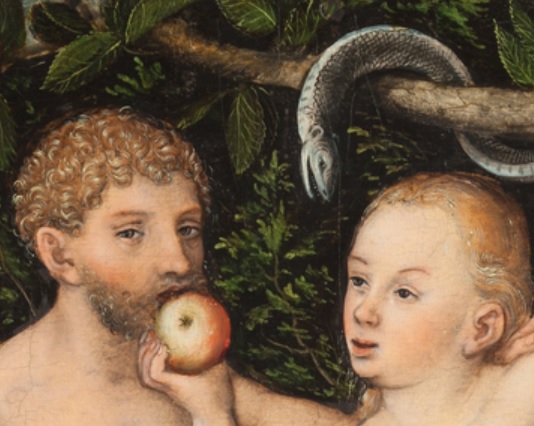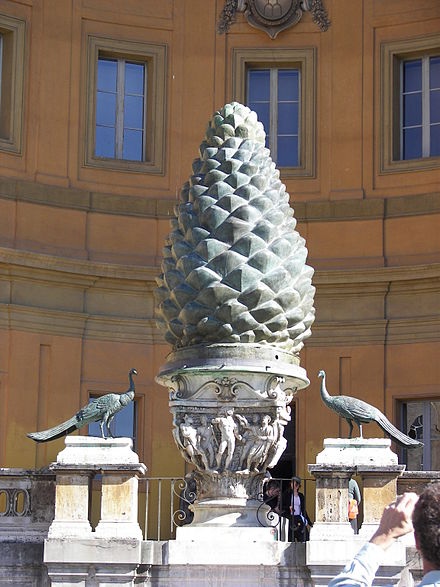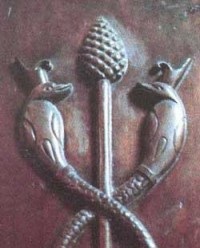It looks like you're using an Ad Blocker.
Please white-list or disable AboveTopSecret.com in your ad-blocking tool.
Thank you.
Some features of ATS will be disabled while you continue to use an ad-blocker.
share:
reply to post by DestroyDestroyDestroy
Stone pines grow in the Mediterranean region, since prehistoric times.
Stone Pines
Stone pines grow in the Mediterranean region, since prehistoric times.
Stone Pines
Where are the facts. While belief is an important aspect of human behavior, it cant replace factual evidence. Where in any of the translated text does
it explain that the eye of horus is a depiction of a part of the human mind?
Yes they look similar, so do many things that does not mean they were intended to represent something specific, no matter much we want them to. Might make us feel good but it is the same as saying a photo of a reflection from a torch on a windscreen look like a ufo so must be a ufo.
in the absence of facts belief requires continual questioning to ensure it is not presented as factual truth.
Yes they look similar, so do many things that does not mean they were intended to represent something specific, no matter much we want them to. Might make us feel good but it is the same as saying a photo of a reflection from a torch on a windscreen look like a ufo so must be a ufo.
in the absence of facts belief requires continual questioning to ensure it is not presented as factual truth.
reply to post by subtopia
I don't have direct evidence to pine one=pineal.
But it is known that temples were seen as the body. So there is at least that connection to start with.
My tag line explores this concept.
I don't have direct evidence to pine one=pineal.
But it is known that temples were seen as the body. So there is at least that connection to start with.
My tag line explores this concept.
Jennyfrenzy
...Vatican Square houses the largest pineal like statue in the world...
As previously mentioned, the largest sculpture of a pinecone is in Vatican Square, along with other pinecone imagery seen on the popes staff.
I would like to add here that the peacock, like those "guarding" the Vatican pinecone sculpture in your picture above, is also a symbolism of ethernal life.
In the Vatican's Sistine Chapel's ceiling there is a famour painting called the "Creation of Adam". To me this is clearly Third Eye symbolism depicting a cross section of the human brain to the right where the "Hand of God" penetrates the Third Eye.


Jennyfrenzy
The Egyptian Staff of Osiris(1224 BC) depicts two intertwined serpents rising up and meeting with pine cone.
I believe that the pinecone was the original "fruit" in the Adam & Eve story from the bible. All the symbology is there in your Staff of Osiris image above:
============================
| Egypt | Bible | Mystisism |
============================
| Staff | Tree | Human spine |
| Snake | Snake | Kundalini |
| Pine | Apple | Third Eye |
============================

This is also why I believe Lucifer/ was called "The Bringer of Light"/"Morning Star(Venus)" - as light means knowledge but it also means that the "gift" from Lucifer was knowledge of how to open the Third Eye and enlighten you soul (as the Bible quote you mentioned confirms).
-MM
edit on 6-4-2014 by MerkabaMeditation because: (no reason given)
sapien82
There are Egyptian scrolls which describe the first documented brain surgery so thats why they knew its shape and location.
granted, but how did they know what it did or even it's function?
did they experiment?
Jennyfrenzy
reply to post by DestroyDestroyDestroy
I have always pronounced it with "pine" but I have friends who pronounce it "pin."
As far as pine cones being littered across ancient egypt, never stated that. I only showed one reference of the Staff of Osiris.
To me, the staff looks like the spine and the pine cone the pineal gland or brain. It's pretty obvious it's a pine cone, so while conifer trees may not be native to Egypt, there is representation of pine cones in this particular example.
The pineal gland is reddish-gray and about the size of a grain of rice (5–8 mm) in humans, located just rostro-dorsal to the superior colliculus and behind and beneath the stria medullaris, between the laterally positioned thalamic bodies. It is part of the epithalamus. It is located in the quadrigeminal cistern and is bathed in the cerebrospinal fluid.[7] The pineal gland is a midline structure (the geometrical center) shaped like a pine cone,[8]
link
maybe it was a wild artichoke?
lol!
wow, the size of a grain of rice?
they had some pretty good eyes back in the day!
and some skills!
MerkabaMeditation
Jennyfrenzy
...Vatican Square houses the largest pineal like statue in the world...
As previously mentioned, the largest sculpture of a pinecone is in Vatican Square, along with other pinecone imagery seen on the popes staff.
The peacock, like those "guarding" the Vatican pinecone sculpture above, is also a symbolism of ethernal life.
In the Vatican's Sistine Chapel's ceiling there is a famour painting called the "Creation of Adam". To me this is clearly Third Eye symbolism depicting a cross section of the human brain to the right where the "Hand of God" penetrates the Third Eye.
-MM
does anyone actually KNOW it's a pine cone?
en.wikipedia.org...
The naturally occurring variant of the artichoke, the cardoon (Cynara cardunculus), which is native to the Mediterranean area,[1] has records of use as a food among the ancient Greeks and Romans. In North Africa, where they are still found in the wild state, the seeds of artichokes, probably cultivated, were found during the excavation of Roman-period Mons Claudianus in Egypt.[2] Varieties of artichokes were cultivated in Sicily since the classical period of the ancient Greeks, the Greeks calling them kaktos. In that period the Greeks ate the leaves and flower heads, which cultivation had already improved from the wild form. The Romans called the vegetable carduus (whence the name cardoon). Globe artichokes are known to have been cultivated at Naples around the middle of the 9th century.[citation needed] Further improvement in the cultivated form appears to have taken place in the medieval period in Muslim Spain and the Maghreb, although the evidence is inferential only.[3] Names for the artichoke in many European languages today come from medieval Arabic الخرشوف al-khurshūf via late medieval Spain.[4]
the vatican statue pic didn't come up.
that's what i was referring too.
i was there in feb.
this pine cone thing is not my bag, but it could be an artichoke. lol!
hell if i know, whatever it is, how did they make any connection with anything at all?
edit on 3007194730am2014 by tsingtao because: (no
reason given)
static.ddmcdn.com...
edit on 3052224730am2014 by tsingtao because: (no reason given)
DestroyDestroyDestroy
reply to post by UNIT76
You mean the lotus flower? Lol.
Aside from ask.com and other sketchy sources, can you find some reputable proof that pine trees existed in ancient Egypt? It would seem a bit out of place, would it not? Seeing a random pine tree in the middle of the desert? The climate would not be very hospitable.
Occam's razor suggests it's not a pine cone. The pine cone has no known spiritual property that links it to ancient cultures and religions. There are pine shaped fruits and flowers. Keep in mind that these are crude iterations and our minds are going to recognize that which is most familiar to us.
For example, let's say pine cones had some kind of healing property; it would then make sense for them to be featured in ancient art.edit on 5-4-2014 by DestroyDestroyDestroy because: (no reason given)
A quick google search reveals there are and were pines all over the Middle East and Egypt, especially at higher elevations:
The most widespread pine tree in Israel is known as "Jerusalem pine" (Pinus halepensis). The mountains around Jerusalem are covered with pines, oaks, olives, terebinths, laurels and more...
If you live in warm dry locations, the Aleppo pine may work well if you have a large garden space. This Mediterranean native is an evergreen conifer that has adapted to growing in these conditions. A Greek wine named retsina includes resin from this tree. The resin was also said to be used as part of the mummification process in ancient Egypt.
edit on 6-4-2014 by PlanetXisHERE because: clarification
Awesome thread OP! I wish that people in daily life discussed things like how to decalcify their pineal glands and how to activate them instead of
the minutiae that passes for worthy discussion.
PROOF of another conspiracy, the pineal gland is obviously extremely important to humans, it doesn't take a genius to figure this out, there is an overwhelming abundance of ancient symbolism, yet you will find no mention of this in the MSM, school, church etc. A DELIBERATE withholding of information vital to humans, proof we are being controlled by some group, entity, force - it doesn't matter, but we are.
Here is another great thread by another member which discusses all the Tryptych arches in ancient architecture and draws a link to the pineal gland:
www.abovetopsecret.com...
PROOF of another conspiracy, the pineal gland is obviously extremely important to humans, it doesn't take a genius to figure this out, there is an overwhelming abundance of ancient symbolism, yet you will find no mention of this in the MSM, school, church etc. A DELIBERATE withholding of information vital to humans, proof we are being controlled by some group, entity, force - it doesn't matter, but we are.
Here is another great thread by another member which discusses all the Tryptych arches in ancient architecture and draws a link to the pineal gland:
www.abovetopsecret.com...
tsingtao
Jennyfrenzy
reply to post by DestroyDestroyDestroy
I have always pronounced it with "pine" but I have friends who pronounce it "pin."
As far as pine cones being littered across ancient egypt, never stated that. I only showed one reference of the Staff of Osiris.
To me, the staff looks like the spine and the pine cone the pineal gland or brain. It's pretty obvious it's a pine cone, so while conifer trees may not be native to Egypt, there is representation of pine cones in this particular example.
The pineal gland is reddish-gray and about the size of a grain of rice (5–8 mm) in humans, located just rostro-dorsal to the superior colliculus and behind and beneath the stria medullaris, between the laterally positioned thalamic bodies. It is part of the epithalamus. It is located in the quadrigeminal cistern and is bathed in the cerebrospinal fluid.[7] The pineal gland is a midline structure (the geometrical center) shaped like a pine cone,[8]
link
maybe it was a wild artichoke?
lol!
wow, the size of a grain of rice?
they had some pretty good eyes back in the day!
and some skills!
Those are pineapples.
musicismagic
tsingtao
Jennyfrenzy
reply to post by DestroyDestroyDestroy
I have always pronounced it with "pine" but I have friends who pronounce it "pin."
As far as pine cones being littered across ancient egypt, never stated that. I only showed one reference of the Staff of Osiris.
To me, the staff looks like the spine and the pine cone the pineal gland or brain. It's pretty obvious it's a pine cone, so while conifer trees may not be native to Egypt, there is representation of pine cones in this particular example.
The pineal gland is reddish-gray and about the size of a grain of rice (5–8 mm) in humans, located just rostro-dorsal to the superior colliculus and behind and beneath the stria medullaris, between the laterally positioned thalamic bodies. It is part of the epithalamus. It is located in the quadrigeminal cistern and is bathed in the cerebrospinal fluid.[7] The pineal gland is a midline structure (the geometrical center) shaped like a pine cone,[8]
link
maybe it was a wild artichoke?
lol!
wow, the size of a grain of rice?
they had some pretty good eyes back in the day!
and some skills!
Those are pineapples.
where do live? japan?
lol, eating that fuki shushi again?
i doubt they had the rainfall needed for that.
artichoke, people.
i don't get either one cept it looks like it.
one you can eat and the other you get the seeds/nuts and eat them. expensive now.
a grain of rice size is a real stretch to associate it with anything 5000yo.
pine nuts are bigger.
unless it's aliens.
naw, maybe they gave you a high back then.
lick a raw artichoke tomorrow.
lol!
i don't get either one cept it looks like it.
one you can eat and the other you get the seeds/nuts and eat them. expensive now.
a grain of rice size is a real stretch to associate it with anything 5000yo.
pine nuts are bigger.
unless it's aliens.
naw, maybe they gave you a high back then.
lick a raw artichoke tomorrow.
lol!
reply to post by Jennyfrenzy
The box tree a type of pine is ta-ashuwra in Hebrew. The ashera.
Most wood was imported from Byblos to Egypt for coffins and building materials. Byblos is the place that Osiris' coffin was caught and turned into a tree.
The box tree a type of pine is ta-ashuwra in Hebrew. The ashera.
Most wood was imported from Byblos to Egypt for coffins and building materials. Byblos is the place that Osiris' coffin was caught and turned into a tree.
tsingtao
artichoke, people.
i don't get either one cept it looks like it.
one you can eat and the other you get the seeds/nuts and eat them. expensive now.
a grain of rice size is a real stretch to associate it with anything 5000yo.
pine nuts are bigger.
unless it's aliens.
naw, maybe they gave you a high back then.
lick a raw artichoke tomorrow.
lol!
Yes, they should rename the gland the "artichokeal gland". I guess the similarity of the words "pine" and "pineal" are just coincidental.
PlanetXisHERE
tsingtao
artichoke, people.
i don't get either one cept it looks like it.
one you can eat and the other you get the seeds/nuts and eat them. expensive now.
a grain of rice size is a real stretch to associate it with anything 5000yo.
pine nuts are bigger.
unless it's aliens.
naw, maybe they gave you a high back then.
lick a raw artichoke tomorrow.
lol!
Yes, they should rename the gland the "artichokeal gland". I guess the similarity of the words "pine" and "pineal" are just coincidental.
It was named for the pine. The stone pine according to Galen 2nd century.
plato.stanford.edu..." target="_blank" class="postlink" rel="nofollow">http...://plato.stanford.edu/entries/pineal-gland/#1.1
reply to post by zardust
Yes, my attempt at sarcasm failed. It seems obvious, but I guess to some it is not.
Yes, my attempt at sarcasm failed. It seems obvious, but I guess to some it is not.
reply to post by PlanetXisHERE
i could kiss you!?
..was waiting for someone like you to arrive
that link you provided fills in a lot of the gaps, i left some other reference links in there.
you've helped me more than you might ever know
hmm..
i could kiss you!?
..was waiting for someone like you to arrive
that link you provided fills in a lot of the gaps, i left some other reference links in there.
you've helped me more than you might ever know
The box tree a type of pine is ta-ashuwra in Hebrew. The ashera.
hmm..
In Hinduism, the asuras (Sanskrit: असुर) are a group of power-seeking deities different from the benign deities known as devas (which are also known as suras). They are sometimes considered naturalists, or nature-beings, in constant battle with the devas.
edit on
6-4-2014 by UNIT76 because: asura thing
reply to post by UNIT76
Yep and in Zoroastrisnism the devas are bad while Asura Mazda is the high god.
IMO the asuras are the primal gods. A few of the devas are actually asuras like Varuna aka ouranos.
Yep and in Zoroastrisnism the devas are bad while Asura Mazda is the high god.
IMO the asuras are the primal gods. A few of the devas are actually asuras like Varuna aka ouranos.
reply to post by tsingtao
The statue in Varican Square is in fact, a pine cone. It also has an interesting history too.
Vatican Square Pinecone
The statue in Varican Square is in fact, a pine cone. It also has an interesting history too.
Pigna is the name of rione IX of Rome. The name means "pine cone" in Italian, and the symbol for the rione is the colossal bronze pine cone, the Pigna, which once decorated a fountain in Ancient Rome next to a vast Temple of Isis. There water flowed copiously from the top of the pinecone. The Pigna was moved first to the old basilica of St. Peter's, where Dante saw it and employed it in the Commedia as a simile for the giant proportions of the face of Nimrod.[1] In the 15th century it was moved to its current location, the upper end of Bramante's Cortile del Belvedere, which is now usually called in its honour the Cortile della Pigna, linking the Vatican and the Palazzo del Belvedere. There it stands today under Pirro Ligorio's vast niche at the far end, flanked by a pair of Roman bronze peacocks brought from Hadrian's mausoleum, the Castel Sant'Angelo.
Vatican Square Pinecone
new topics
-
Paradox of Progress
Ancient & Lost Civilizations: 3 hours ago -
Joe Biden gives the USA's Highest Civilian Honor Award to Hillary Clinton and George Soros.
US Political Madness: 6 hours ago -
Winter Storm
Fragile Earth: 7 hours ago -
Biden Face Planted Somewhere
Politicians & People: 8 hours ago -
A great artist and storyteller, for kids of all ages
General Entertainment: 9 hours ago
top topics
-
Joe Biden gives the USA's Highest Civilian Honor Award to Hillary Clinton and George Soros.
US Political Madness: 6 hours ago, 13 flags -
What Is 'Quad Demic'? Mask Mandate Returns In These US States
Diseases and Pandemics: 13 hours ago, 11 flags -
Volcano Watch 2025
Fragile Earth: 15 hours ago, 8 flags -
The Future of fashion .
Social Issues and Civil Unrest: 13 hours ago, 8 flags -
Winter Storm
Fragile Earth: 7 hours ago, 7 flags -
Bin Cyber Junk…
Short Stories: 14 hours ago, 6 flags -
Biden Face Planted Somewhere
Politicians & People: 8 hours ago, 5 flags -
A great artist and storyteller, for kids of all ages
General Entertainment: 9 hours ago, 5 flags -
Paradox of Progress
Ancient & Lost Civilizations: 3 hours ago, 4 flags -
The Undertones - Teenage Kicks
Music: 15 hours ago, 3 flags
active topics
-
Post A Funny (T&C Friendly) Pic Part IV: The LOL awakens!
General Chit Chat • 7988 • : KrustyKrab -
Winter Storm
Fragile Earth • 18 • : RickyD -
What Is 'Quad Demic'? Mask Mandate Returns In These US States
Diseases and Pandemics • 29 • : TheRickestRick -
Paradox of Progress
Ancient & Lost Civilizations • 3 • : BingoMcGoof -
Here we again... CHINA having mass outbreak of something
Diseases and Pandemics • 24 • : NoCorruptionAllowed -
A great artist and storyteller, for kids of all ages
General Entertainment • 1 • : angelchemuel -
-@TH3WH17ERABB17- -Q- ---TIME TO SHOW THE WORLD--- -Part- --44--
Dissecting Disinformation • 3931 • : RelSciHistItSufi -
Joe Biden gives the USA's Highest Civilian Honor Award to Hillary Clinton and George Soros.
US Political Madness • 29 • : caterpillage -
NJ Drones tied to Tesla explosion at Trump Las vegas
General Conspiracies • 45 • : glen200376 -
New Jersey-Teachers Can Now Be Certified Without Passing Basic Reading Writing Math Testing
Education and Media • 14 • : boatguy12


